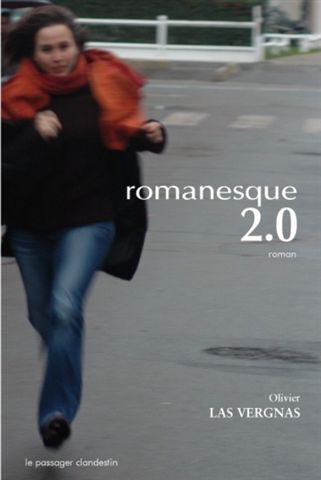 A l’occasion de la sortie de « Romanesque 2.0 » (http://romanesque.fr ) qui met en scène un logiciel auteur de roman, on a beaucoup parlé des travaux de Rafael Perez y Perez de l’université de Mexico et du logiciel « Mexica » qui génére des scénarii de nouvelles mettant en scène les aztèques.
A l’occasion de la sortie de « Romanesque 2.0 » (http://romanesque.fr ) qui met en scène un logiciel auteur de roman, on a beaucoup parlé des travaux de Rafael Perez y Perez de l’université de Mexico et du logiciel « Mexica » qui génére des scénarii de nouvelles mettant en scène les aztèques.
Malheureusement, ses publications ne sont pas connues en France et donc ni traduites, ni même disponibles. En accord avec Rafael, ce blog vous propose de comprendre mieux ces recherches qui ont inspiré Abdel, le héros de « Romanesque 2.0 ».
« Employing emotions to drive plot generation in a computer-based storyteller », le dernier article de Rafael paru dans « cognitive systems research 8 (2007), pages 89-109 » n’est pas libre de droit, » puisqu’il est diffusée par Elsevier sous forme payante. Mais malgré cela…
En voici le résumé : Emotions are an integral part of the creative process; however, it is hard to find computer models of creativity where emotions play a fundamental role. This paper describes a computer model for plot generation based on emotions and tensions between characters. In particular, the document illustrates how emotions are employed to progress a story in a coherent way and generate novel situations, and how the dramatic tension of the story in progress can be employed to evaluate its interestingness. The model is implemented in a computer program named MEXICA [Pe´rez y Pe´rez, R., & Sharples, M. (2001). MEXICA: a computer model of a cognitive account of creative writing. Journal of Experimental and Theoretical Artificial Intelligence, 13(2), 119139]; this work concentrates on the role of emotions in plot generation. The main claim is that a story can be represented as a cluster or group of emotional links and tensions between characters that progresses over story-time; story-actions work as operators that modify such clusters. I present results showing how story generation is affected by various model parameters. This approach means the program is flexible, as it avoids using predefined story-structures or characters goals to drive story generation. Furthermore, evaluation of computer generated stories showed that MEXICAs stories were most often selected as the best story. This suggests that the story-generation mechanisms within MEXICA are sufficiently rich to generate interesting and novel stories. [ 2006, Elsevier B.V. All rights reserved].
En revanche, sur le même sujet, deux autres articles antérieurs signés aussi par Perez y Perez avec Mike Sharples de luniversité de Birmingham (avec qui Rafael avait soutenu sa thèse), tout aussi intéressants sont intégralement disponibles sur le web en pdf. Le premier est intitulé : « Three Computer-Based Models of Storytelling : BRUTUS, MINSTREL and MEXICA » et propose la comparaison des 3 logiciels de référence en matière dautomates romanciers. On le trouve à http://www.nottingham.ac.uk/lsri/msh/Papers/MEXICA%20KBS.pdf . En voici le résumé : This paper attempts to establish criteria to analyse and evaluate computer models of creativity in writing. The paper provides a brief review of the antecedents of automatic story-generation and offers a proposal for the analysis and evaluation of computer models of creativity in writing. It reviews three major projects to develop computer-based storywriters published between 1993 and 2000 and analyses their approach, similarities, differences and contributions. It compares the three approaches and discusses implications for the modelling of creativity in writing and the design of future story generation systems. Le second http://www.eee.bham.ac.uk/sharplem/Papers/mexica_jetai.pdf est intitulé : MEXICA: a computer model of a cognitive account of creative writing et son propos est le suivant : MEXICA is a computer model that produces frameworks for short stories based on the engagement-reflection cognitive account of writing. During engagement MEXICA generates material guided by content and rhetorical constraints, avoiding the use of explicit goals or storystructure information. During reflection the system breaks impasses, evaluates the novelty and interestingness of the story in progress and verifies that coherence requirements are satisfied. In this way, MEXICA complements and extends those models of computerised story-telling based on traditional problem-solving techniques where explicit goals drive the generation of stories. This paper describes the engagement-reflection account of writing, the general characteristics of MEXICA and reports an evaluation of the program ».
___________________________________________________
A signaler aussi (toujours en anglais malheureusement), la page de synthèse sur les générateurs http://liquidnarrative.csc.ncsu.edu/developers/bibliography/narrative-generation.html
édité par le lquid narrative group : http://liquidnarrative.csc.ncsu.edu/
Sur tous ces sujets, voir aussi :
http://www.dm.ucf.edu/~rmcdaniel/files/dissertation.pdf
et bien sûr, lisez « Romanesque 2.0 » disponible à http://romanesque.fr

Ping : Blog » Blog Archive » “Gagnez un prix littéraire pour 9.95 euros” prétend une publicité de Micro Application
Ping : L’AutoKteb d’Abdel » Blog Archive » En savoir plus sur Mexica, de R. Perez y Perez et sa dramatisation par la gestion des émotions